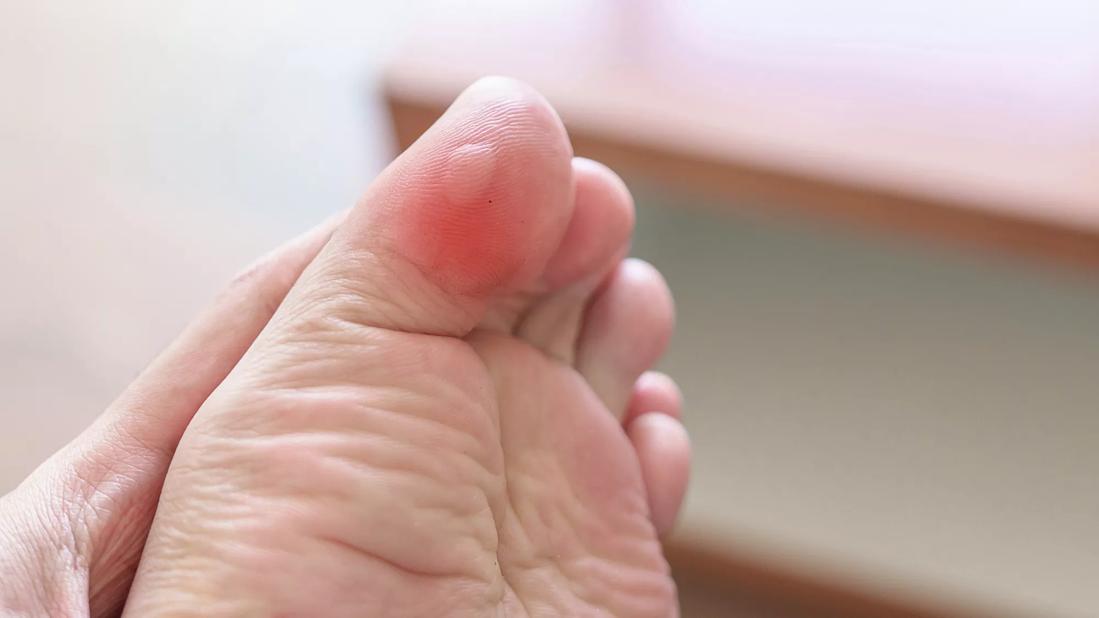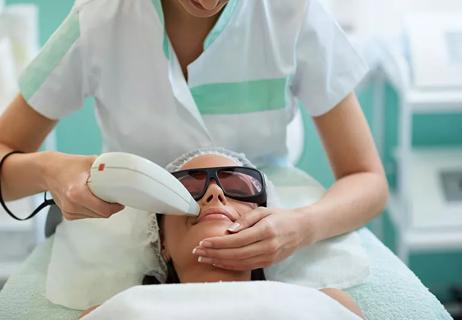Wear properly fitted shoes, break them in ahead of time and wear moisture-wicking socks

There’s nothing quite like a pair of new kicks … and unfortunately, there’s also nothing quite like the dread of breaking them in.
Advertisement
Cleveland Clinic is a non-profit academic medical center. Advertising on our site helps support our mission. We do not endorse non-Cleveland Clinic products or services. Policy
Blisters, painful and fluid-filled, can be the scourge of new shoe wearers. But they’re just one of your body’s many ways of trying to look out for you. They form to protect irritated skin.
But is there any way to prevent them from cropping up? And what can you do about them once they make an appearance? Foot specialist Georgeanne Botek, DPM, explains how to prevent blisters on your feet and what to do if you already have them.
While blisters can have many causes, the most common reason is friction — the force of two surfaces rubbing against each other. In this case, the surfaces are your shoes and your skin. The repeated friction of walking causes your top layer of skin to weaken and start to separate from the layers beneath it.
There are other types of blisters, too, like those caused by minor burns, blood blisters from pinching or crushing injuries to your skin and those from medical conditions. But in this case, we’re specifically talking about shoe-induced blisters on your toes and feet.
“The best way to deal with blisters is to avoid them in the first place,” Dr. Botek says. She offers five ways to keep blisters at bay.
There are lots of reasons to wear properly fitted shoes, and here’s another one to add to the list. Wearing shoes that are too big or too small can encourage extra friction, which means an extra chance of blisters.
Advertisement
“Any shoe that doesn’t fit well can result in skin irritation,” Dr. Botek warns. Plus, your feet can change in width or size as you age, so be sure your shoes change in size to accommodate them.
If you’ve ever shopped for sneakers and wondered why there are so many kinds, consider this: Different types of shoes are made for different activities, and wearing the wrong ones can put you at risk for serious injuries — and, yes, blisters.
If you’re taking part in an athletic activity that calls for specialized footwear (like boxing, cycling, hiking and running), wearing the right shoes helps keep your feet safe.
And the same is true for walking. Whether you’re walking to work or wandering around a new city on vacation, try walking shoes rather than slip-on sneakers and unsupportive sandals.
You’re itching to wear those new shoes out in the world, but patience is a virtue. And it can go a long way in preventing blisters.
“Break shoes in slowly before you wear them for long periods of time,” Dr. Botek advises. “This is true for dress shoes, high-heeled shoes and boots, as well as for any shoes that you’ll wear for athletic activities like running, accelerating, quick stopping and jumping.”
Ease into your new shoes by wearing them indoors in short spurts. Put a bandage or a bit of petroleum jelly (like Vaseline®) on any spots where they’re rubbing or irritating your skin.
“If you tend to have sweaty feet, you’re going to be more prone to blisters,” Dr. Botek says. She suggests applying a drying agent to your feet before you work out, play sports or do anything else that might make you sweat.
Drying agents that can help with sweaty feet include:
“You can even apply a drying agent the night before to help prevent overly sweaty feet throughout the day,” she adds.
Wearing socks helps keep your feet dry and reduces friction, which keeps blisters from forming. But choosing the right type of socks is key.
Advertisement
Your feet aren’t the only spot where blisters can develop. To keep your hands and fingers blister-free, Dr. Botek recommends wearing gloves for activities like raking, shoveling, moving heavy objects and lifting weights.
“Wash your hands frequently and use a towel to be sure that your hands are dry, which will help you prevent blisters,” she says. “Even playing video games or other repetitive motions for extended periods of time can give you blisters, too, so just be aware of the onset of redness, drainage or sweating and pain.”
Ugh, bad news: You’re reading this after you’ve already gotten a blister. Now what?
“You can take care of most blisters that occur because of friction or minor burns yourself,” Dr. Botek says.
They typically go away on their own within a week or two — but in the meantime, here are the best ways to care for it so that you can heal ASAP.
The most common type of blister you get from shoes is called a sterile blister — the kind filled with a clear, watery liquid called serum (or, sometimes, with clear plasma).
“Typically, new skin forms underneath the skin, and that fluid will absorb back into your skin,” Dr. Botek explains. “So, as long as it’s not painful, the general rule is not to pop it.”
Advertisement
Think of a blister as your body’s own form of bandage: It’s there to keep your skin safe! So, try to keep your hands off and let your body do its thing. (Plus, popping it can raise your risk of infection.)
If your sterile blister is painful, Dr. Botek recommends opening one of the edges of the blister — not the center — and leaving the outer layer intact. Follow best practices for popping a blister safely and sterilely.
“After you open it, keep the area as clean as possible to prevent infections,” Dr. Botek states. “Topical ointments like iodine or other over-the-counter topical antibiotic products can help keep it clean while it’s healing.”
Keep the blister covered and change the bandage regularly.
If you pop a blister and the liquid that drains is clear, that’s the sign of a sterile blister. Liquid that’s white or milky yellow is a sign of infection.
“You don’t necessarily need oral antibiotics at that point,” Dr. Botek clarifies, “but you should be more diligent in wound care, using over-the-counter antimicrobial topical wound gels and monitoring it closely in case it does need medical treatment.”
If a blister becomes an infection and gets worse instead of improving, it’s time to seek medical treatment.
Advertisement
“If the blister worsens or if the drainage persists even after you’ve drained the blister, seek out a physician’s care,” Dr. Botek advises. Other signs of infection include:
If your wound doesn’t seem to be healing and you notice red or purplish streaks on your skin, seek emergency care immediately. This is a sign of cellulitis, a bacterial infection that can quickly become life-threatening.
In people with diabetes, even a small blister can lead to a more serious wound, especially if you have risk factors like:
“If you have a blister and any of these conditions, you should be evaluated by a healthcare provider more urgently,” Dr. Botek emphasizes.
Learn more about our editorial process.
Advertisement

Working with a therapist, staying active and practicing mindfulness are just a few ways to help manage stress

This automatic flight-or-fight response makes your hair stand on end, causing little harmless bumps to form for every hair follicle

Laser hair removal, laser surgery, excision and steroid injections are all potential treatment options

Use products that reduce inflammation without causing irritation and avoid fragrances, dyes and exfoliators

Nutrition plays an important role in managing this chronic inflammatory skin disease

Aloe vera, warm compresses and diet adjustments can help alleviate symptoms

Popping or prodding at these cysts could lead to infection

The upper lip discoloration is caused by factors like sun exposure, hormones and medications

If your nose is constantly running, it could be allergies, chronic sinusitis, nasal polyps or other concerns

If you find yourself obsessing over rejection or a one-sided relationship, you’re likely stuck in limerence

Alcohol is a depressant and can interfere with your sleep, mood and more